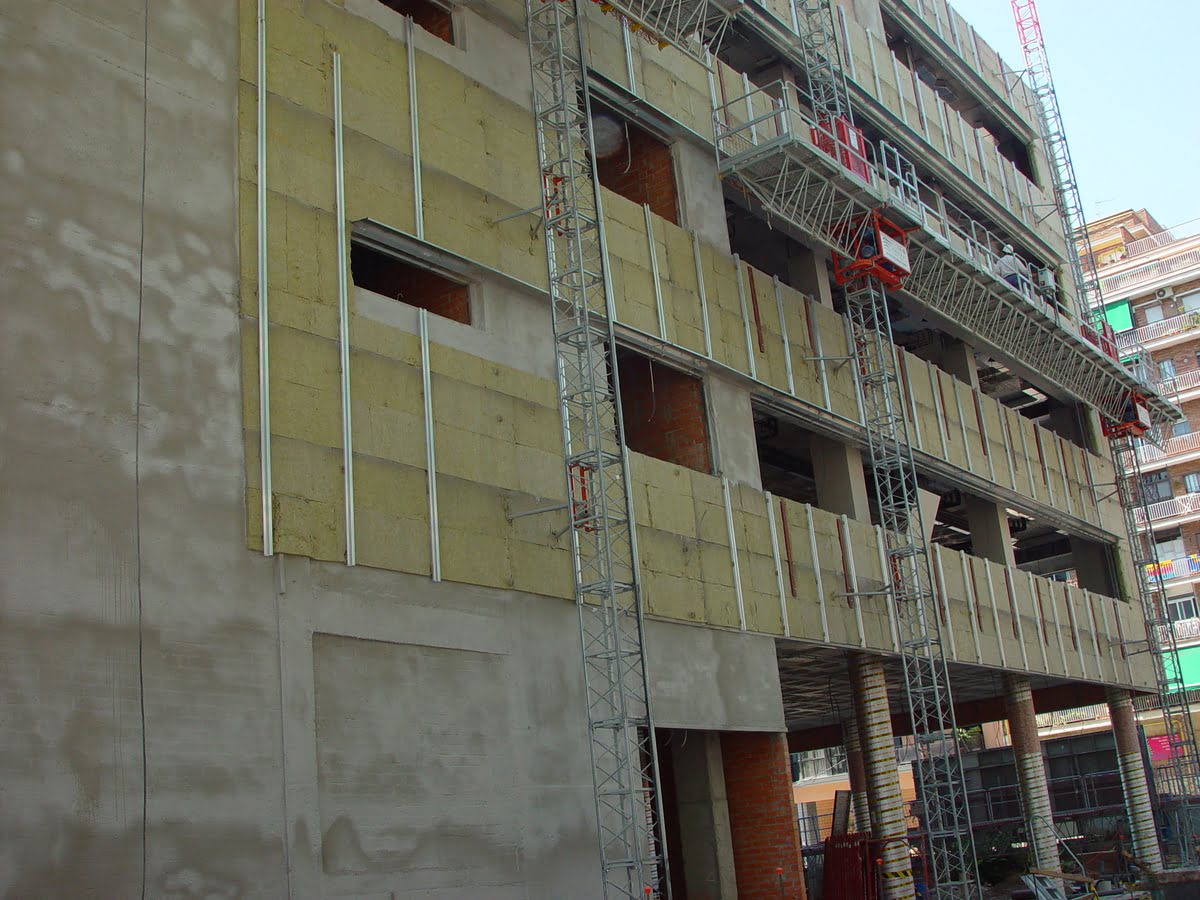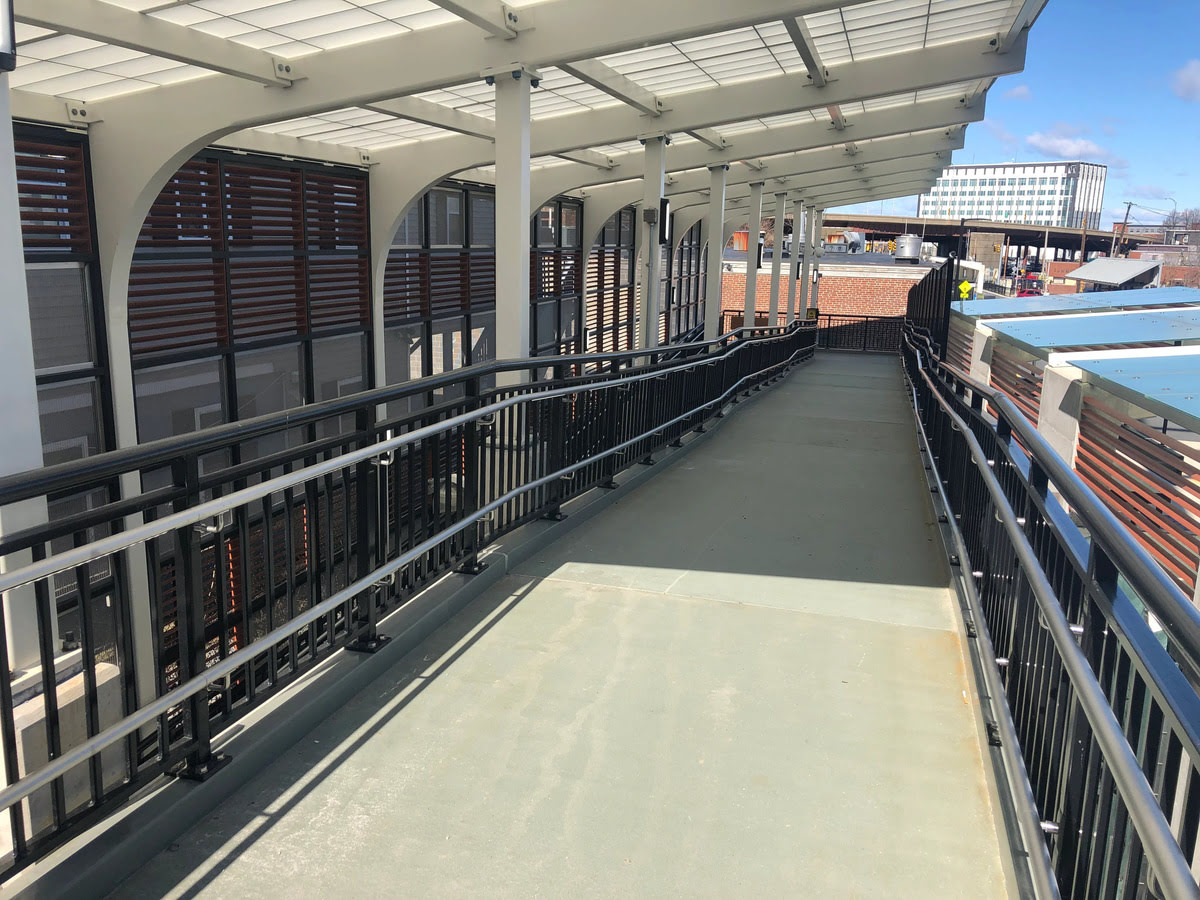Home>diy>Building & Construction>What Does “At Grade” Mean In Construction


Building & Construction
What Does “At Grade” Mean In Construction
Modified: December 7, 2023
Learn what "at grade" means in the context of building construction and how it relates to the construction process. Enhance your knowledge of building construction with this informative guide.
(Many of the links in this article redirect to a specific reviewed product. Your purchase of these products through affiliate links helps to generate commission for Storables.com, at no extra cost. Learn more)
Introduction
Welcome to the world of construction, where every detail and aspect plays a crucial role in creating safe and sturdy structures. One such important concept in construction is “at grade,” which refers to a specific level or elevation within a building project. Understanding what “at grade” means and its significance is essential for architects, contractors, and anyone involved in the construction industry.
In construction terminology, “at grade” refers to a level that is even or at ground level. It indicates that a particular component or feature is located or constructed parallel to the ground surface. It is a fundamental concept often used in various aspects of construction, including site planning, foundation design, and building layout.
The term “at grade” can also be synonymous with “on grade” or “ground level.” It signifies that the construction component or feature is directly connected to or integrated with the ground, without any elevation variance or structural support.
The concept of “at grade” is commonly encountered in different types of construction projects, including residential, commercial, and industrial. From the initial stages of site development to the final execution of building elements, the understanding and proper implementation of “at grade” construction techniques are vital for a successful and robust structure.
In the following sections, we will explore the importance of “at grade” in construction, provide examples of its application, highlight the advantages and disadvantages, and discuss the key factors that need to be considered when incorporating “at grade” elements into a construction project. Let’s delve deeper into the world of “at grade” construction and unlock its secrets.
Key Takeaways:
- “At grade” construction, building components or features directly at ground level, offers benefits such as ease of access, cost savings, flexibility for future modifications, seamless integration with the environment, and simplicity in construction processes.
- Considerations for “at grade” construction include thorough site analysis, proper grading and drainage, compliance with accessibility requirements and building codes, addressing functional needs, planning for utilities, and considering environmental impact.
Definition of “At Grade”
The term “at grade” is used in the construction industry to describe a specific level or elevation within a building project. It refers to a construction component or feature that is situated parallel to the ground surface or directly connected to the ground without any variation in height.
When a building or structure is said to be “at grade,” it means that it is constructed at ground level, without any significant elevation or difference in height. This can include various elements such as foundation slabs, entrances, walkways, parking lots, and landscaping features.
“At grade” construction is particularly relevant in the context of site planning, as it determines the positioning and layout of different elements on the ground surface. It is essential to consider factors such as drainage, accessibility, and overall functionality when designing and implementing “at grade” components.
The concept of “at grade” is applicable in various construction contexts. In residential construction, for example, it is often used to describe the level of the main entrance or ground floor of a house, which is directly accessible from the surrounding landscape.
In commercial buildings, “at grade” can refer to the ground level entrance of a shopping center, office building, or hotel. It also plays a crucial role in determining accessible pathways, parking areas, and outdoor amenities.
When it comes to industrial construction, “at grade” construction can involve features such as loading docks, truck bays, and outdoor storage areas, all built at ground level for ease of access and operation.
Overall, the term “at grade” is an integral part of the construction vernacular, representing a specific level or elevation within a construction project that is directly connected to the ground surface. Understanding this concept is essential for proper planning, design, and execution of various construction elements.
Importance of “At Grade” in Construction
The concept of “at grade” plays a significant role in construction projects, as it influences the design, functionality, and overall success of a structure. Understanding the importance of “at grade” construction is crucial for architects, engineers, and contractors to ensure the safe and efficient execution of their projects. Here are some key reasons why “at grade” is important in construction:
- Accessibility and Safety: By constructing features such as entrances, walkways, and parking lots at ground level or “at grade,” buildings can provide convenient and safe access for occupants and visitors. This is especially important for individuals with mobility challenges or those using wheeled devices, such as strollers or wheelchairs. “At grade” construction ensures that everyone can easily access and navigate the building, promoting inclusivity and compliance with accessibility regulations.
- Drainage and Water Management: Proper drainage is crucial in construction to prevent water accumulation and related issues. “At grade” construction allows for effective grading and slope management, ensuring that rainwater and runoff flow away from the building and do not pool or infiltrate undesired areas. By carefully incorporating “at grade” design principles, construction professionals can mitigate the risk of water damage and maintain a dry and sustainable site.
- Site Adaptability: Building features and components designed “at grade” can be easily adjusted or modified as needed. This flexibility allows for future modifications, expansions, or renovations without requiring extensive structural changes. By planning for “at grade” elements from the outset, construction professionals ensure that the building can adapt to evolving needs and facilitate future updates with minimal disruption or cost.
- Aesthetics and Integration: “At grade” construction enables seamless integration between the building and its surroundings. By designing elements such as landscaping, pathways, and exterior spaces “at grade,” the construction project blends harmoniously with the natural environment. This enhances the overall aesthetics of the structure, creating a visually pleasing and inviting space for users and visitors.
- Cost Efficiency: Designing and constructing features “at grade” can be cost-effective compared to elevated structures or complex foundation systems. By minimizing the need for elevated or elevated support structures, construction costs can be reduced, making the project more financially viable. Additionally, the simplicity of “at grade” construction often leads to faster completion times, further saving on labor and operational expenses.
In summary, “at grade” construction is vital in the construction industry for its impact on accessibility, safety, drainage, adaptability, aesthetics, and cost efficiency. By incorporating this concept effectively into their projects, professionals can create well-designed, functional, and sustainable structures that meet the needs of occupants while complying with local building codes and regulations.
Examples of “At Grade” Construction
“At grade” construction is a common practice in various types of construction projects. It involves the placement of components or features directly at ground level, without any elevation or height variance. Here are a few examples of “at grade” construction that can be found in different building projects:
- Entrances and Walkways: One of the most common examples of “at grade” construction is the construction of entrances and walkways that allow easy access to buildings. These features are typically built directly at ground level, ensuring convenience for pedestrians and compliance with accessibility requirements. Whether it’s a residential, commercial, or public building, constructing entrances and walkways “at grade” ensures seamless entry and exit for occupants and visitors.
- Parking Lots: Another example of “at grade” construction is the development of parking lots. These areas are designed and built at ground level, providing a designated space for vehicles to park. Whether constructed with asphalt, concrete, or other materials, parking lots at grade offer ease of access for vehicles and pedestrians. They are often strategically located near building entrances, enhancing convenience and efficient traffic flow.
- Pedestrian Plazas and Outdoor Spaces: Many projects incorporate outdoor spaces, such as courtyards, plazas, and recreational areas, that are constructed “at grade.” These spaces provide gathering spots, relaxation areas, or hubs for social activities. By designing these outdoor areas at the same level as the surrounding landscape, they seamlessly merge with their surroundings, creating an engaging and inviting environment for users to enjoy.
- Sidewalks and Pathways: Sidewalks and pathways that connect different areas within a construction project are often constructed “at grade.” These walkways facilitate safe and convenient pedestrian access while connecting various buildings, amenities, or outdoor spaces. “At grade” sidewalks and pathways are designed to be easily navigable and integrate with the overall site design, ensuring a smooth and accessible pedestrian experience.
- Landscaping Features: Landscaping elements, such as gardens, planters, and green spaces, are also commonly incorporated “at grade.” These features enhance the aesthetics of the project while promoting a harmonious blend with the surrounding environment. By strategically placing landscaping elements at ground level, construction professionals can create visually appealing spaces that seamlessly integrate with the overall design.
These examples demonstrate the wide range of “at grade” construction practices across different project types. By utilizing this concept effectively, construction professionals can create functional and accessible spaces that meet the needs of the project and its users while harmonizing with the surrounding landscape.
“At grade” in construction refers to a level that is even with the surrounding ground or floor. It is important to ensure that structures and surfaces are properly at grade to prevent drainage issues and ensure stability.
Advantages and Disadvantages of “At Grade” Construction
“At grade” construction, which refers to building components or features directly at ground level, offers several advantages and disadvantages. Understanding these benefits and drawbacks is crucial for architects, engineers, and contractors when designing and executing construction projects. Here are the key advantages and disadvantages of “at grade” construction:
- Advantages:
- Ease of Access: Building entrances, walkways, and parking lots constructed “at grade” provide easy and convenient access for occupants and visitors, including those with mobility challenges.
- Cost Savings: “At grade” construction is generally more cost-effective compared to elevated structures. It often requires less complex foundation systems and can reduce overall construction costs.
- Flexibility: “At grade” features allow for future modifications and expansions if needed without requiring significant structural changes. This flexibility can save time and money in the long run.
- Seamless Integration: By designing elements like landscaping and outdoor spaces “at grade,” construction projects can seamlessly blend in with the surrounding environment, enhancing the overall aesthetics of the structure.
- Simplicity and Efficiency: “At grade” construction techniques are relatively straightforward and can lead to faster completion times, reducing labor and operational expenses.
- Disadvantages:
- Drainage Concerns: “At grade” construction needs to consider proper drainage and water management to prevent issues such as stagnant water or flooding. Careful planning and implementation are necessary to avoid potential water damage.
- Accessibility Challenges: In some cases, building features constructed “at grade” may present challenges for individuals with disabilities or those who require additional assistance. Providing alternative accessibility measures, such as ramps or elevators, may be necessary.
- Site Constraints: In certain locations with uneven terrain or low-lying areas, “at grade” construction may not be suitable or feasible without significant site preparation or costly foundation work.
- Less Space Efficiency: Constructing elements “at grade” may require larger areas, especially for parking lots or outdoor spaces, compared to elevated or multi-level construction. This can be a limitation in projects with limited land availability.
- Safety Considerations: Building features at ground level can require additional safety measures to prevent accidents or unauthorized access, such as adequate lighting, security systems, or physical barriers.
Considering the advantages and disadvantages of “at grade” construction is essential in the decision-making process for any construction project. By carefully assessing the specific requirements, site conditions, and project objectives, professionals can determine the most appropriate construction approach to achieve a successful and sustainable outcome.
Read more: What Is Grading In Construction
Factors to Consider in “At Grade” Construction
When incorporating “at grade” construction into a project, several factors need to be carefully considered to ensure a successful and efficient implementation. From site preparation to design considerations, here are the key factors to keep in mind:
- Site Analysis: Before commencing any construction, a thorough site analysis is essential. This analysis should include an evaluation of the soil conditions, drainage patterns, and any potential obstacles or constraints that may affect the “at grade” construction. Understanding the site’s characteristics will help in determining the appropriate foundation and drainage systems.
- Grading and Slope: Proper grading and slope management are critical in “at grade” construction. It is important to level the ground surface and ensure that slopes are directed away from the building to avoid water pooling and drainage issues. Proper grading techniques should be employed to achieve the desired aesthetic and functional outcomes.
- Drainage Considerations: Implementing effective drainage systems is crucial in “at grade” construction. It is essential to design and install appropriate drainage infrastructure, including surface drains, gutters, and subsurface drainage systems, to prevent water from accumulating around the building or causing damage to the foundation. Ensuring proper grading and slope management will contribute to effective water management on the site.
- Accessibility and Code Compliance: It is important to consider accessibility requirements and comply with building codes and regulations. Designing entrances, walkways, and parking lots at ground level should include accessibility features such as ramps, handrails, and appropriate signage. Compliance with applicable accessibility standards will ensure that the constructed elements are accessible to all individuals, including those with disabilities.
- Functional Needs: Understanding the functional requirements of the project is crucial when incorporating “at grade” construction. Consider the specific needs of the building occupants and users, such as pedestrian flow, space utilization, and parking requirements. Careful planning should be done to allocate appropriate spaces for various activities and ensure the layout promotes efficiency and convenience.
- Utilities and Services: Consideration should be given to the location and accessibility of utilities and services when designing “at grade” construction. It is important to identify and plan for the placement of underground utilities, such as water, electricity, and telecommunications, to ensure easy access for maintenance and future expansion.
- Environmental Impact: Environmental considerations should be taken into account in “at grade” construction. Implementing sustainable practices, such as using permeable surfaces for walkways and parking lots to reduce stormwater runoff, incorporating native plants in landscaping, and considering energy-efficient lighting options, can help minimize the project’s environmental impact.
By considering these factors during the planning and design stages of “at grade” construction, professionals can ensure that the project is executed efficiently, meets the required standards, and provides a safe and functional environment for occupants and users.
Conclusion
“At grade” construction is a fundamental concept in the world of construction that involves building components or features directly at ground level. Understanding the definition, importance, and considerations of “at grade” construction is crucial for architects, engineers, and contractors to ensure the success and efficiency of their projects.
The benefits of “at grade” construction are numerous. It offers ease of access for occupants and visitors, cost savings compared to elevated structures, flexibility for future modifications, seamless integration with the surrounding environment, and simplicity and efficiency in construction processes.
However, there are also certain disadvantages to consider, such as drainage concerns, accessibility challenges, site constraints, less space efficiency, and the need for additional safety measures.
When incorporating “at grade” construction into a project, several factors should be carefully considered. These include conducting a thorough site analysis, managing grading and slope to ensure proper water drainage, complying with accessibility requirements and building codes, addressing functional needs, planning for utilities and services, and considering the environmental impact of the construction.
In conclusion, “at grade” construction is an essential aspect of the construction industry. By understanding the definition, benefits, considerations, and potential challenges associated with “at grade” construction, professionals can effectively plan and execute projects that are functional, safe, and visually appealing. Incorporating “at grade” elements seamlessly into the design and construction process will result in well-designed structures that meet the needs of occupants while ensuring compliance with regulations and promoting environmental sustainability.
Frequently Asked Questions about What Does "At Grade" Mean In Construction
Was this page helpful?
At Storables.com, we guarantee accurate and reliable information. Our content, validated by Expert Board Contributors, is crafted following stringent Editorial Policies. We're committed to providing you with well-researched, expert-backed insights for all your informational needs.















0 thoughts on “What Does “At Grade” Mean In Construction”